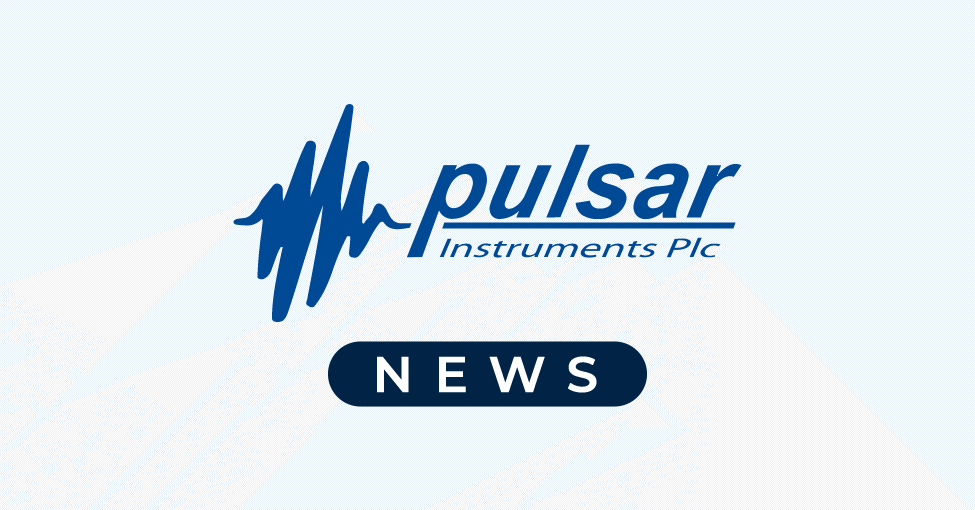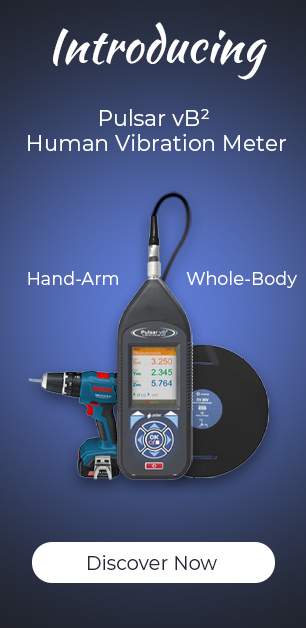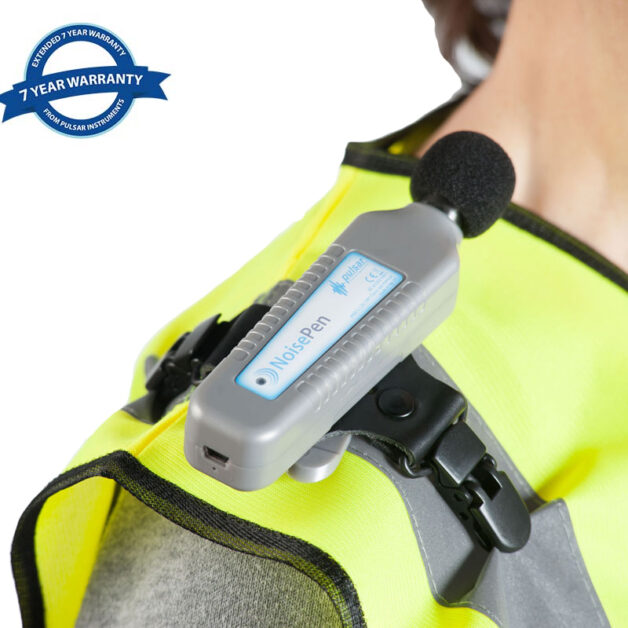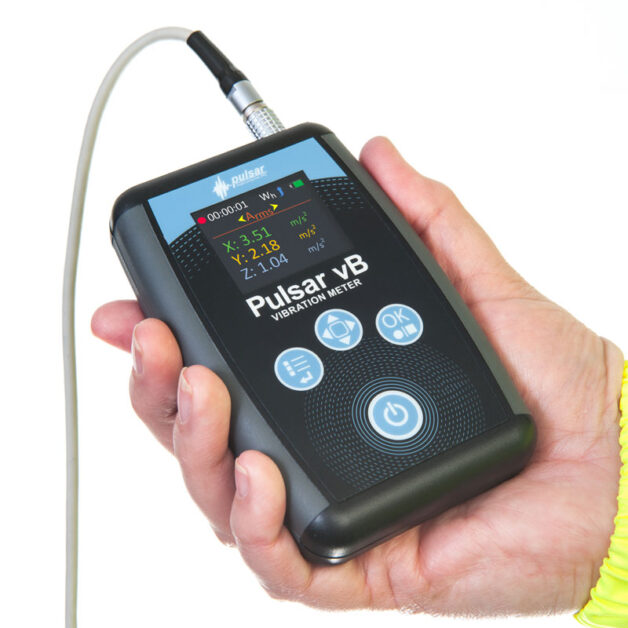Let’s hear it for interactive noise warning signs
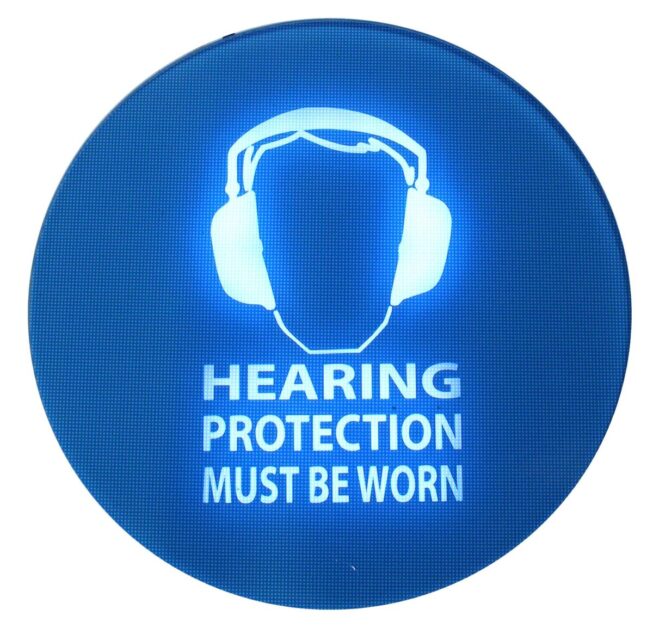
Wearing ear defenders is not always popular with staff exposed to industrial noise. So does interactive noise warning technology offer alternatives?
Picture this, you’ve just completed your noise assessment, and you found several areas of your workplace where any number of your employees are likely to be exposed to levels of noise at or above the Upper Action Value (UAV) of 85dB(A). What now? You need to find ways to bring people that work in those areas under the action values and will look at the options. Easy right?
Whilst arming your workforce with hearing protection seems the simplest way to do this – and in fact, many employers often attribute the success of their health and safety programme to this distribution of hearing protection – according to the Control of Noise at Work Regulations 2005 this should be the last resort. The Regulations state that if, after having explored and carried out all the technical and organisational ways to reduce noise in the workplace, you identify that employees will still be exposed to noise levels at or above the Lower Action Value (LAV) of 80 dB(A), then and only then will you need to provide them with access to hearing protection (or issue it directly to those employees still at or above the UAV).
Hearing protection zones
The Guidance given in Regulation 7 of the Regulations suggests that hearing protection zones offer a way for employers to effectively manage the use of hearing protection, and states:
“85 Making the use of hearing protection compulsory for workers exposed below the upper exposure action values (below 85 dB(A)) should be avoided, except within hearing protection zones.”
“86 Where workers are exposed to noise levels above the UAV and are therefore required to wear hearing protection, you should not necessarily make it compulsory at all times throughout the working day, e.g. in areas or at times when noise levels are low. Hearing protection should be targeted at particular noisy jobs and activities and be selected to reduce exposure at least to below the UAV.”
These zones can serve as a reminder to any employees exposed to an LEP,d (daily personal noise exposure) at or above the UAV, for whom hearing protection is compulsory during particular jobs or activities, that they have a responsibility themselves to wear the hearing protection provided. They also offer a way of ensuring that other members of staff and visitors can be protected from the noise that those jobs or activities produce.
Noise-activated signage vs standard signs
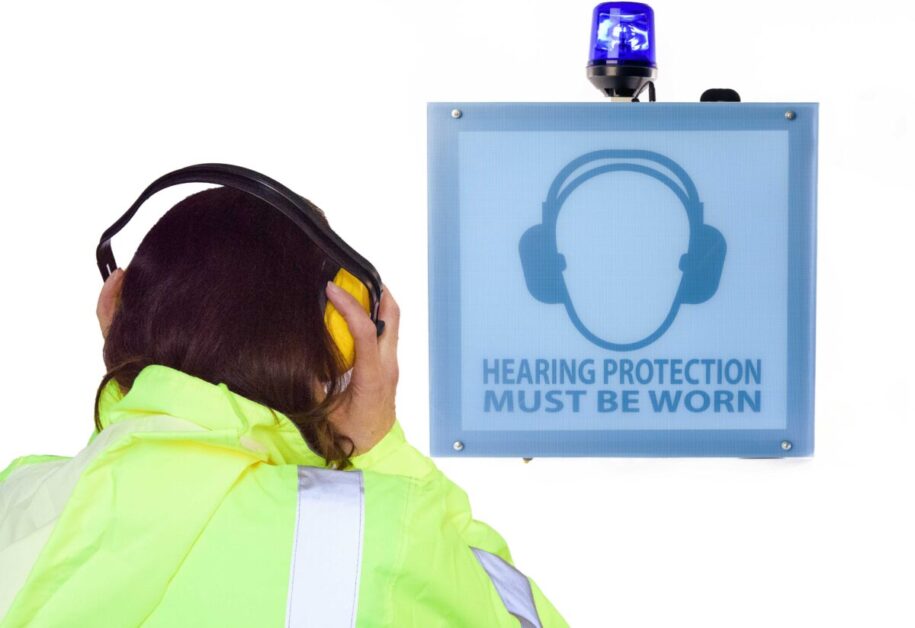
Wearing ear defenders is not always popular with staff exposed to industrial noise, and it may not be practical for employees to wear hearing protection constantly, especially where the noise levels are intermittent or vary significantly over the day.
Putting up a standard printed “Hearing Protection Must Be Worn” sign means that employees have to follow it continuously in these zones and someone has to monitor the people to make sure they comply with the instruction.
Noise-activated warning signs, Like the Pulsar SafeEar, provide an alternative temporary warning linked to the actual level of noise itself and can, therefore, help to manage the wearing of PPE. The way such signs work is that the Employer sets a trigger level of say 80 dB(A), once noise reaches that level the sign will light up its warning. Such signs therefore effectively allowing the marking of an area as “Hearing Protection Mandatory Only When Lit”.
These interactive noise warning signs offer the advantage then, that hearing protection need only be worn when necessary. Using hearing protection only when levels require means companies placing less reliance on using PPE as a noise control measure, more comfort for workers and less work-place isolation.
Such signs can also be used to mark out a factory into multiple zones and use PPE only in those areas when lights are on – something that just isn’t possible with regular signs. They can serve as an important safety function in work environments that rely on processes that involve or produce exceptionally loud sounds; other workers i.e. from the office or visitors who walk through workshops and factories can immediately tell at a glance if the environment is noisy and put their PPE on.
If it is essential for anyone entering these areas to be prepared and already wearing hearing protection often a secondary connecting ‘Remote Unit’ can be connected to a ‘Master unit’ and positioned outside of the zone next to an entrance or door for example. This will ensure that anyone entering the room will be aware of the high noise levels and the need to wear appropriate hearing protection.
Do interactive hearing protection signs work?
Yes. Just using hearing protection for the noisiest activities is usually enough to bring your LEP,d down to the required levels i.e. 80dB(A) or less.
In addition, some signs can also be used to log data and store noise levels and therefore give an indication of noise levels over time. Enabling the Employer to keep track of problem areas and investigate issues to prevent high levels of noise exposure in workers.
Larger signs such as the Pulsar SafeEar Max are suitable weatherproof and are suitable for outside use on large construction sites for example.
This should all lead to a better understanding of noise issues affecting workers and also a reduction in the use of hearing PPE and reliance on it as a catch-all solution.
| Case studyA large vehicle maintenance workshop in Yorkshire was assessed. The workers undertake a variety of tasks each day such as removing rust from vehicles using an angle grinder, metal repair work using an arc welder, jet washing vehicles and their component parts in an open plan environment. The LEP’d of the workers carrying out these tasks was found to be above the Upper Action Value of 85dB(A), and as work takes place in a large open plan warehouse other workers in the vicinity, as well as office staff and visitors, were potentially found to be at risk. Aside from proposing various technological and organisational solutions such as changes to work patterns, the next obvious solution to reducing individual’s LEP,d seemed to be to create mandatory Hearing Protection Zones where the noisiest activities took place to ensure that employees who enter any such areas are wearing hearing protection. The downsides of this are that anyone working in those areas would need to wear hearing protection whether it was noisy or not, and also that someone would need to ‘police’ the correct wearing of this hearing PPE. It also potentially means that anyone working in that zone at quieter times may not be able to hear the general hubbub of other workers and communicate with them. This can often lead to feelings of isolation, loss of morale and high staff turnover. The alternative then is to use Noise-Activated Warning Signs to mark out the hearing protection zones. For this company, it was possible to relocate some of the activities that resulted in high noise levels behind an acoustic curtain and zone this as a hearing protection zone when the signs were lit. We also proposed installing additional signs in other areas of the open plan workshop so that when activities from the zone were high enough to impact other people working in the vicinity the signs would trigger, and other employees and visitors would know to put on their protection. Furthermore, ‘Remote Units’ connected to a Master were employed outside of the workshop next to a hearing protection dispenser so anyone entering the workshop already knew if noise was an issue. |
Reference
Pulsar Instruments’ original article published in HSM MAGAZINE, June 2019
